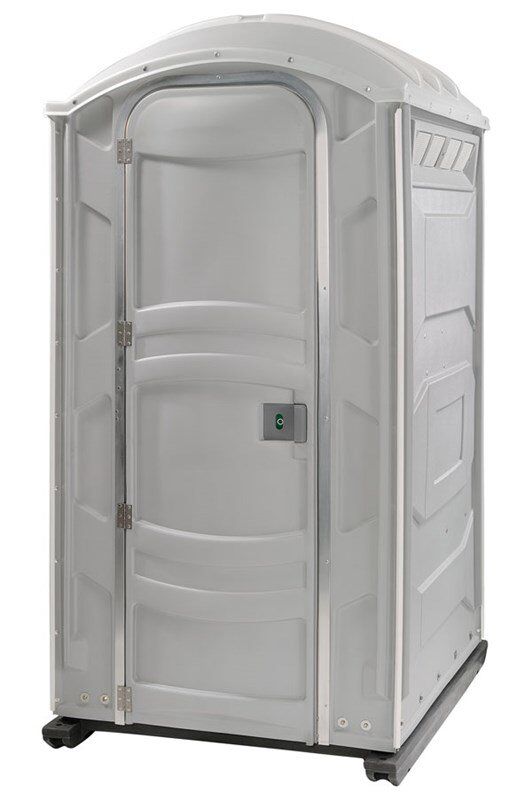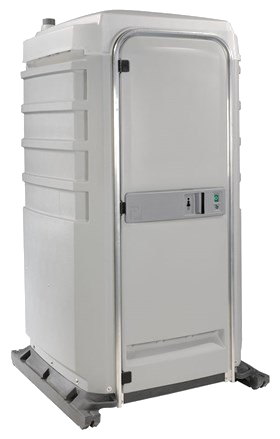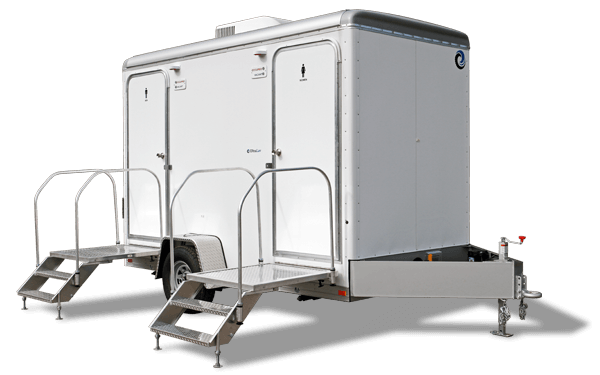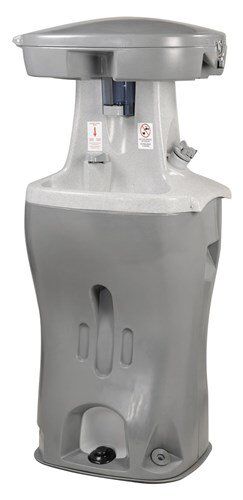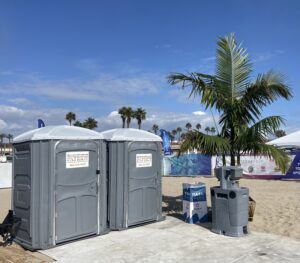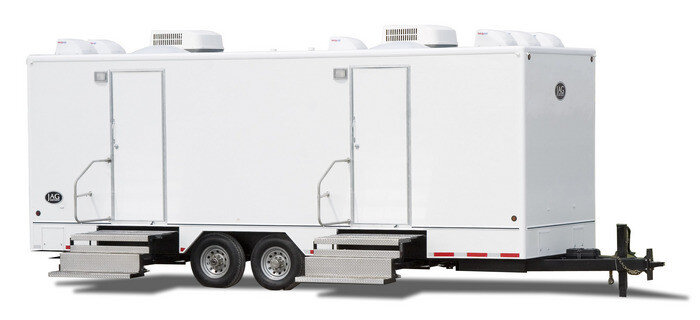The five main ingredients inside that blue porta potty liquid are:
- Water
- Blue Dye
- Fragrance
- Surfactants
- Biocides and enzymes
The addition of dye to water serves the purpose of concealing the visual presence of waste within porta potties.
Typically, blue chemicals are employed as the industry standard. Over time, these blue chemicals gradually transition to a green hue as they interact with a sufficient amount of waste. This color transformation signals to workers that the chemicals have become less effective and need replacement.
To mitigate unpleasant odors, fragrances are incorporated, with bubblegum and cherry scents being among the most commonly used. These fragrances are enhanced by surfactants, which aid in their uniform dissolution in water, ensuring a consistent and pleasant scent throughout the unit.
Moreover, modern porta potty units frequently include biocides and enzymes. These components consist of enzymes and microbes that target odor-producing bacteria in human waste and expedite the decomposition of organic matter. This decomposition process simplifies later waste disposal procedures.
How Are Portable Toilets Emptied?
As porta potties are self-contained units, the disposal of waste requires the expertise of sanitation professionals. Typically, a sanitation worker services around 40 to 50 units per day. Porta potties are cleaned on a weekly basis, or after approximately every 100 uses.
The waste removal process involves connecting a vacuum directly to the porta potty’s holding tank or output hole, if equipped. This vacuum efficiently suctions the waste into a specialized tanker truck. These trucks are equipped with both a waste storage unit and a smaller freshwater tank, facilitating the efficient and hygienic removal of waste from the porta potties.
Following the waste removal process, the sanitation workers replenish the porta potty’s holding tank with a mixture of fresh water, dye, and an enzyme solution. Subsequently, they thoroughly cleanse the interior, including the walls, floors, seats, and urinals, ensuring the elimination of bacteria and any splashed waste.
To provide a complete and sanitary experience, the workers restock essential supplies such as paper towels, toilet paper, and hand sanitizers. After these tasks are completed, the waste collected in the tanker truck is transported to a municipal treatment plant, where it is appropriately disposed of alongside waste from conventional plumbing systems.
Key Considerations for Porta Potty Rentals
Porta potties offer a range of options in terms of size and features, making it essential to consider specific factors before renting one:
- Event or Project Type:
The nature of your event or project will significantly influence your choice of portable toilet. Standard porta potties might suffice for some, while others may opt for “luxury” trailers or climate-controlled units to cater to more upscale events.
- Number of Attendees:
A general guideline is to have one porta potty for every 40 to 60 individuals. However, for construction sites, the ratio should be closer to one unit per every 20 workers.
- Location:
The size and layout of your venue matter. More extensive spaces may necessitate more porta potties to ensure adequate coverage. Additionally, the proximity of the units to your event or construction site affects delivery and maintenance costs.
- Maintenance and Sanitation:
The duration of your event will determine the frequency of maintenance needed to maintain clean facilities. It’s vital to ensure that the rental company you choose adheres to appropriate sanitation standards, safeguarding the hygiene and well-being of your guests or workers.

